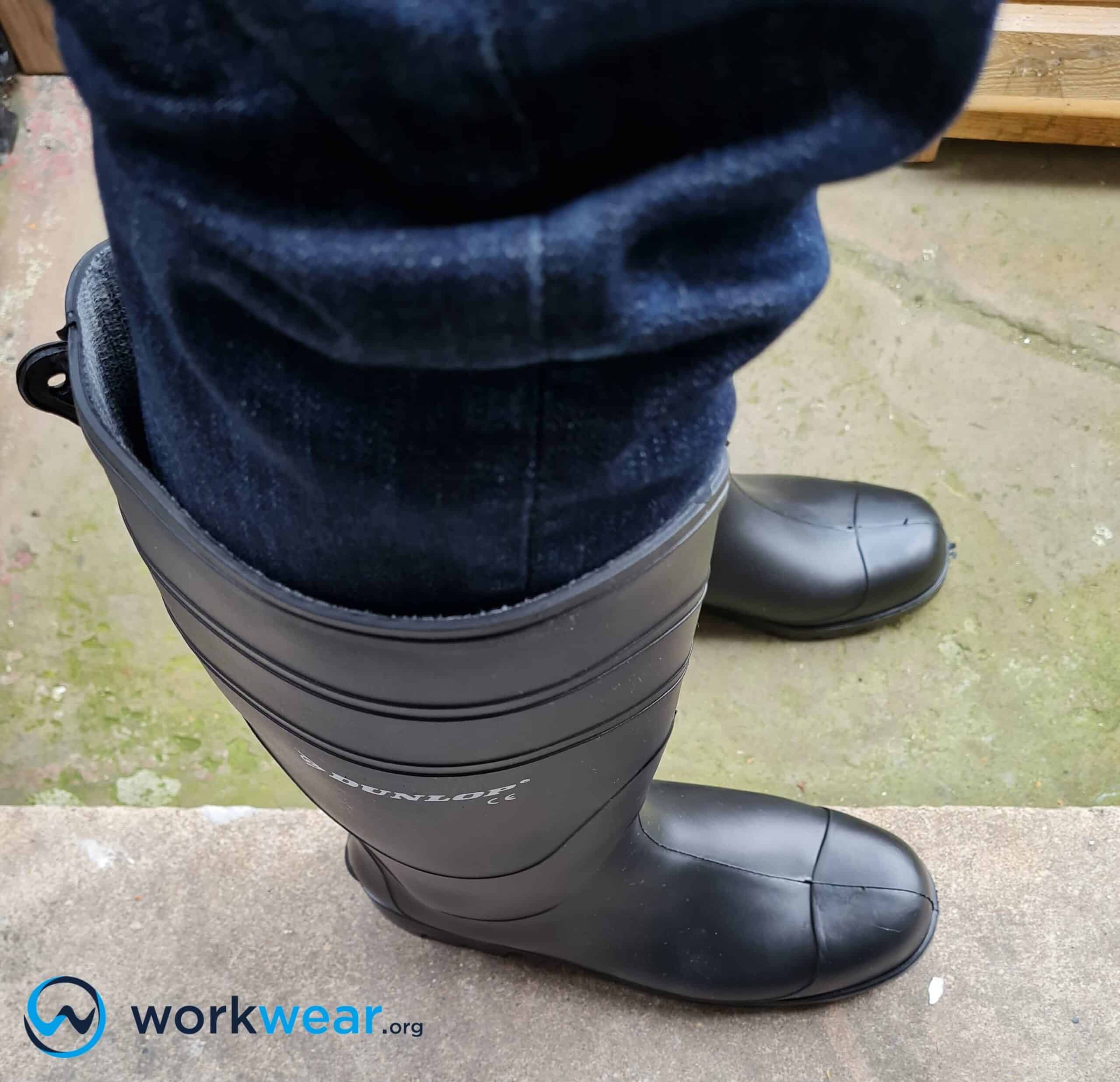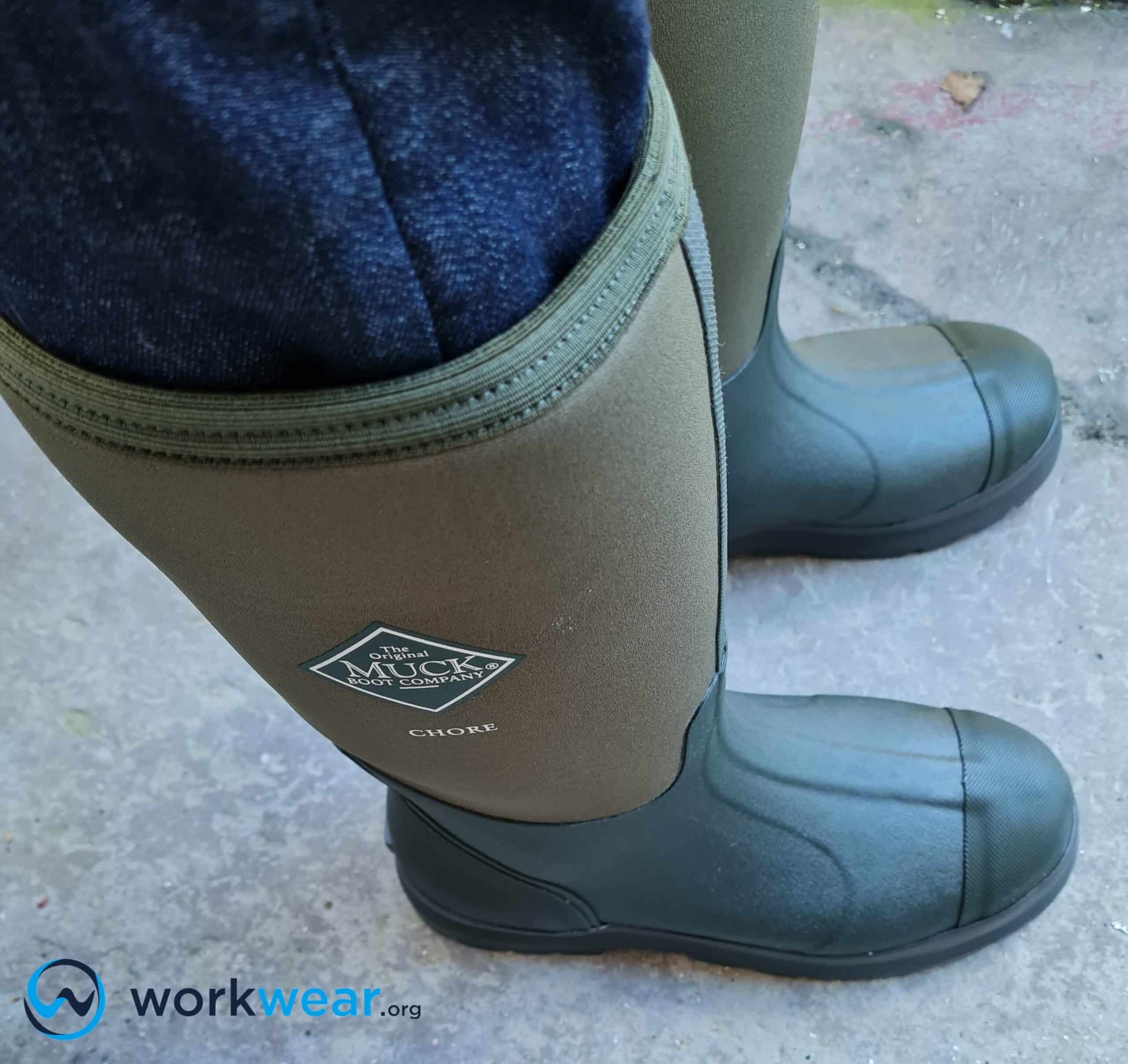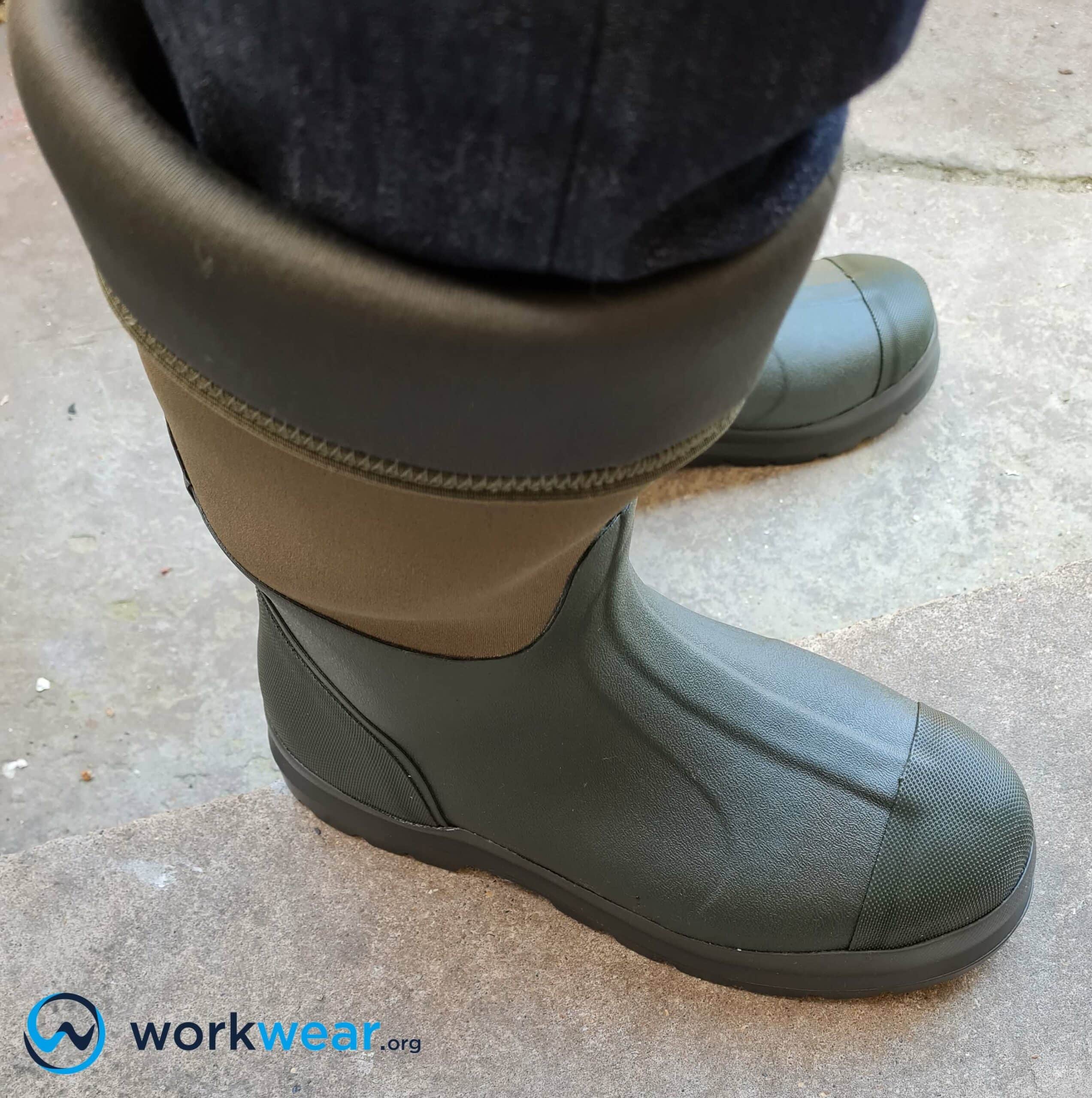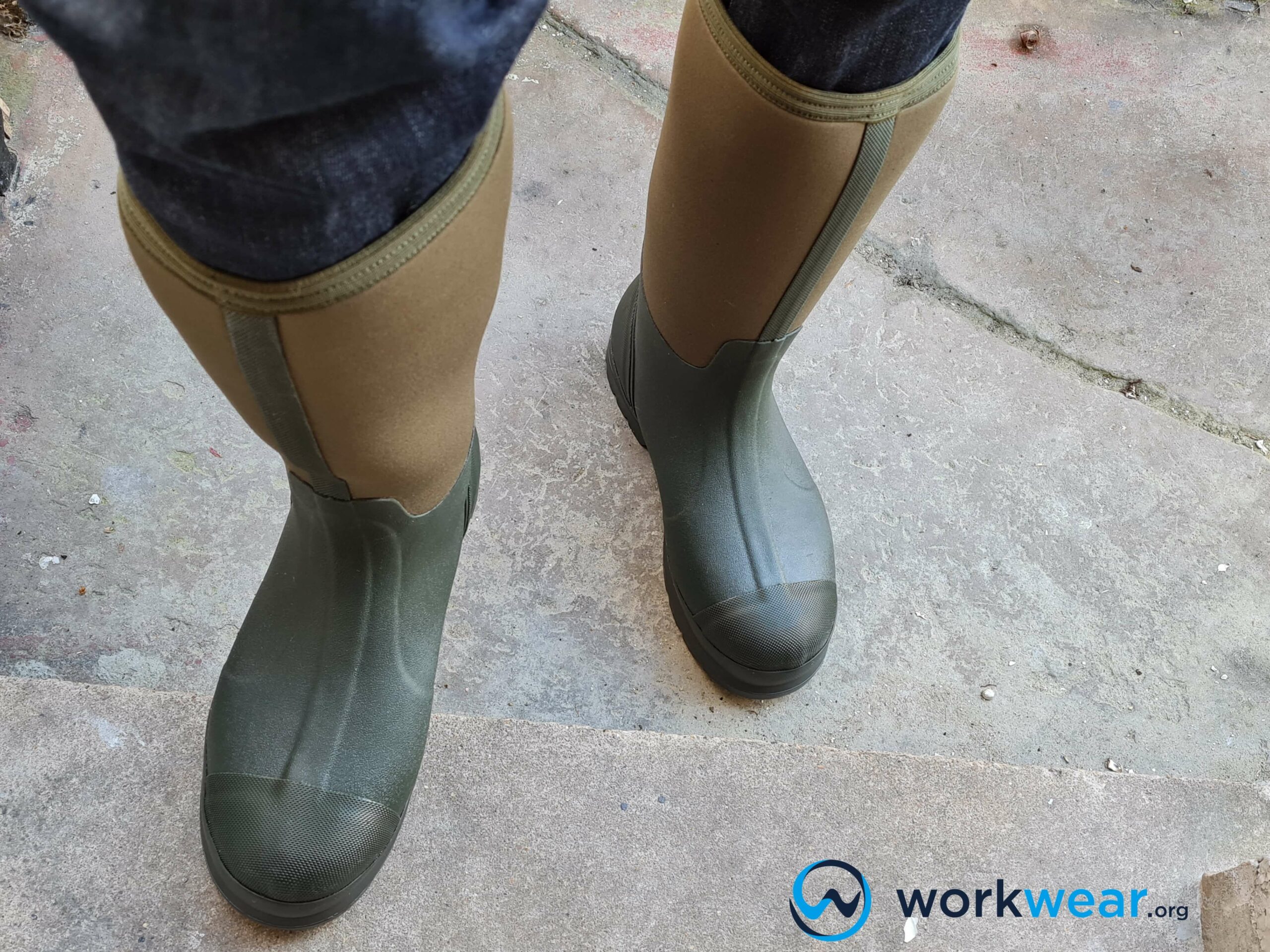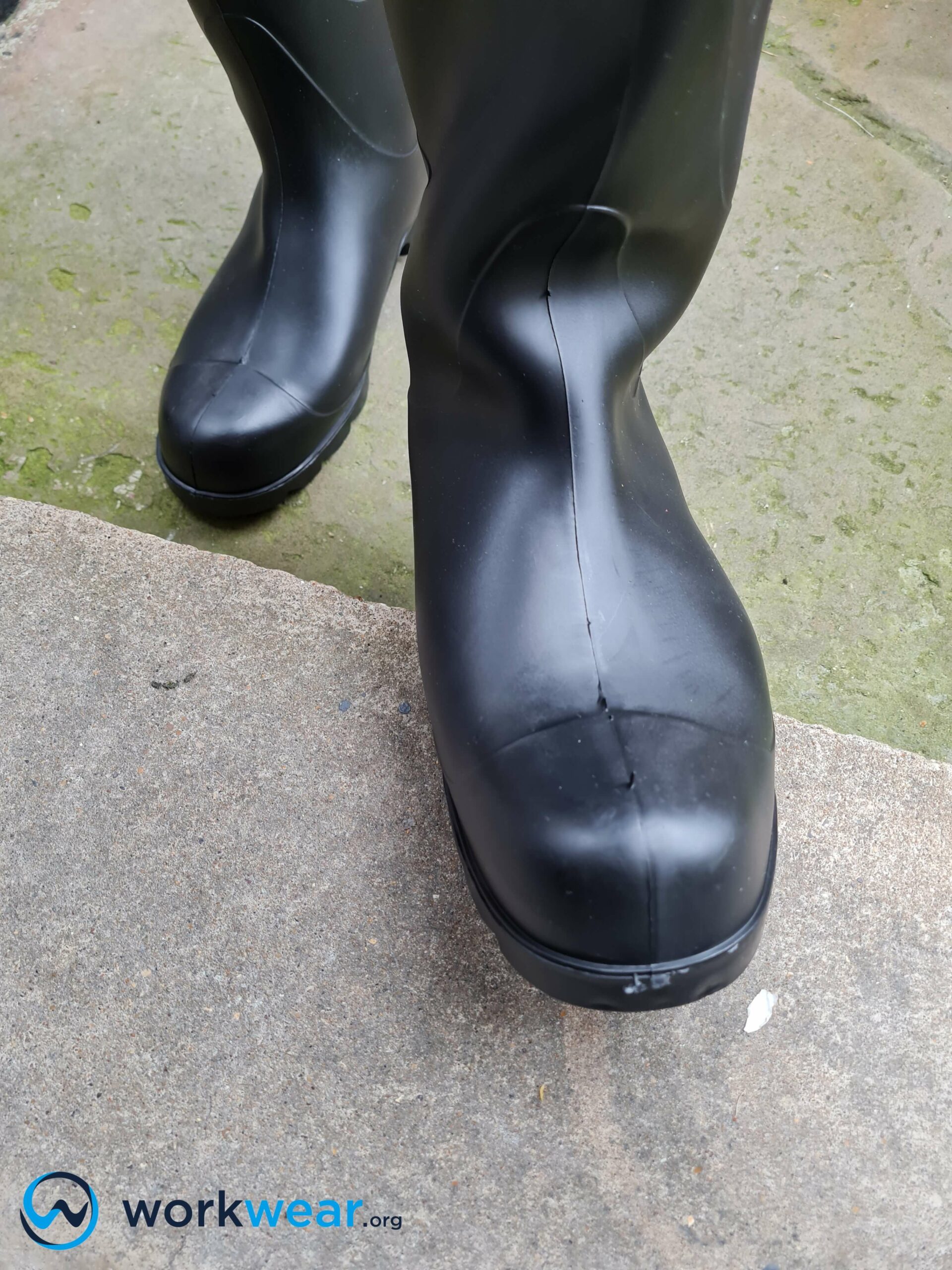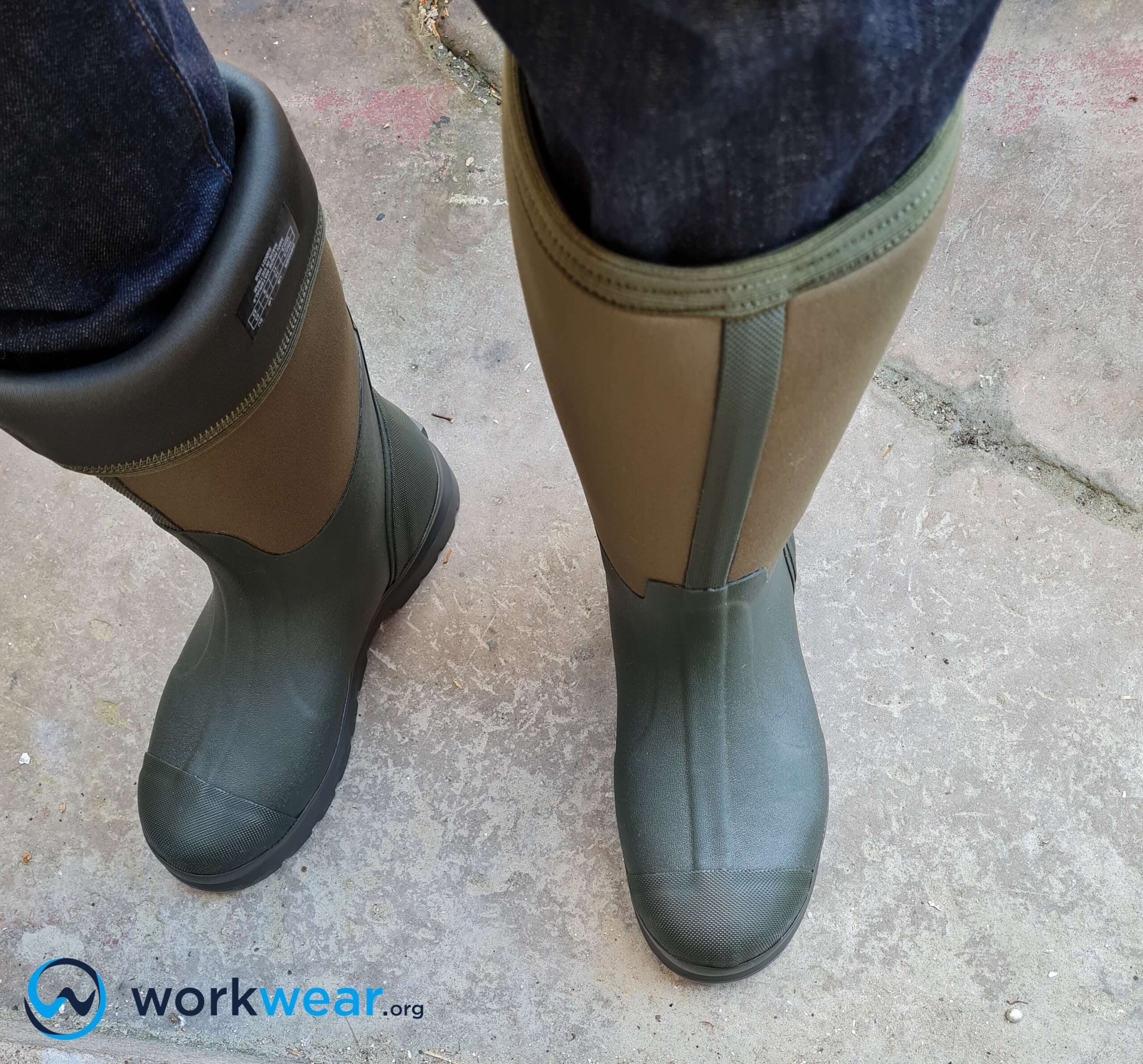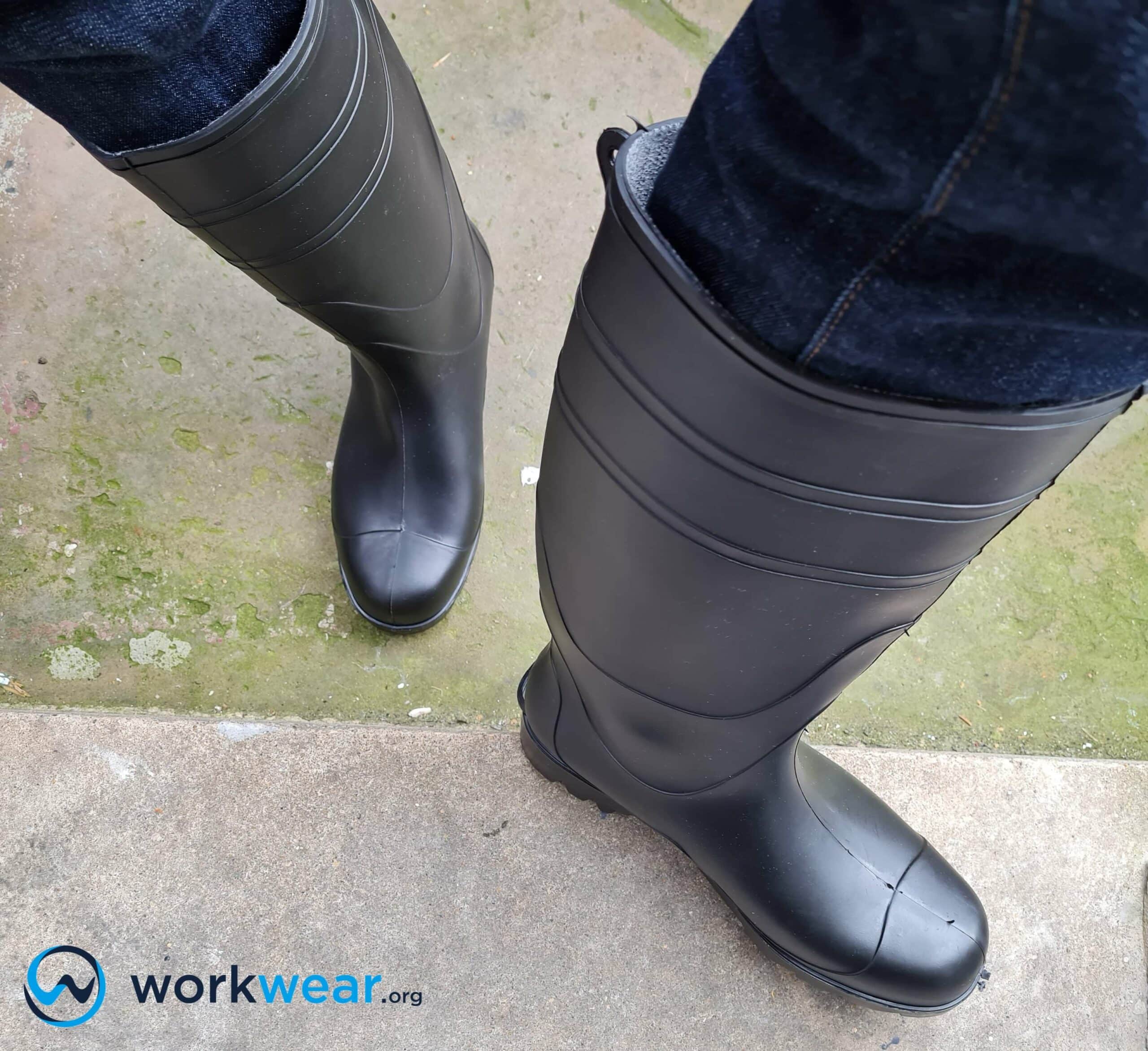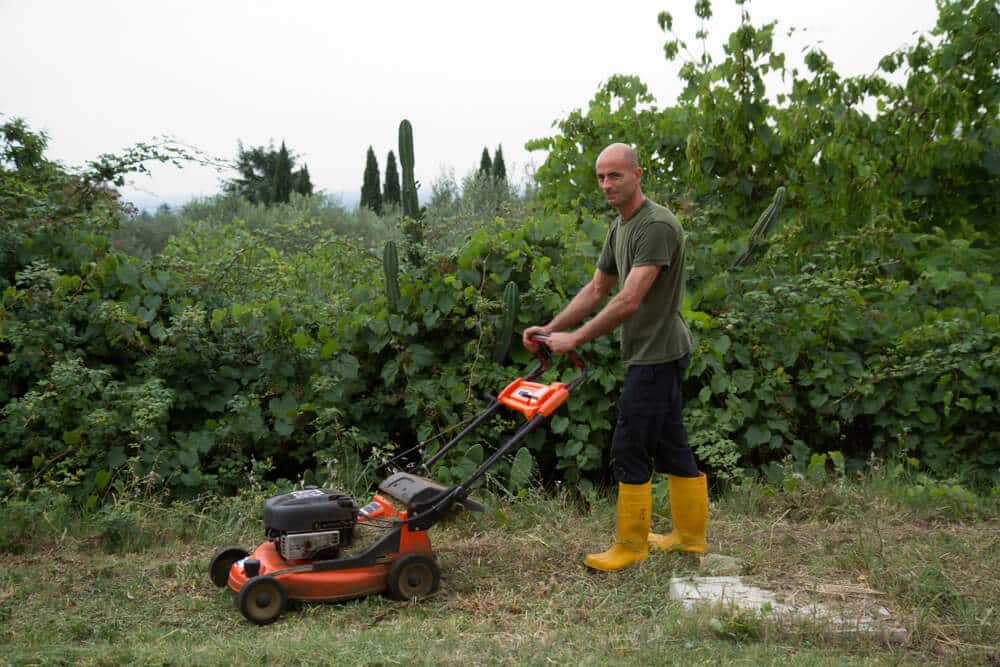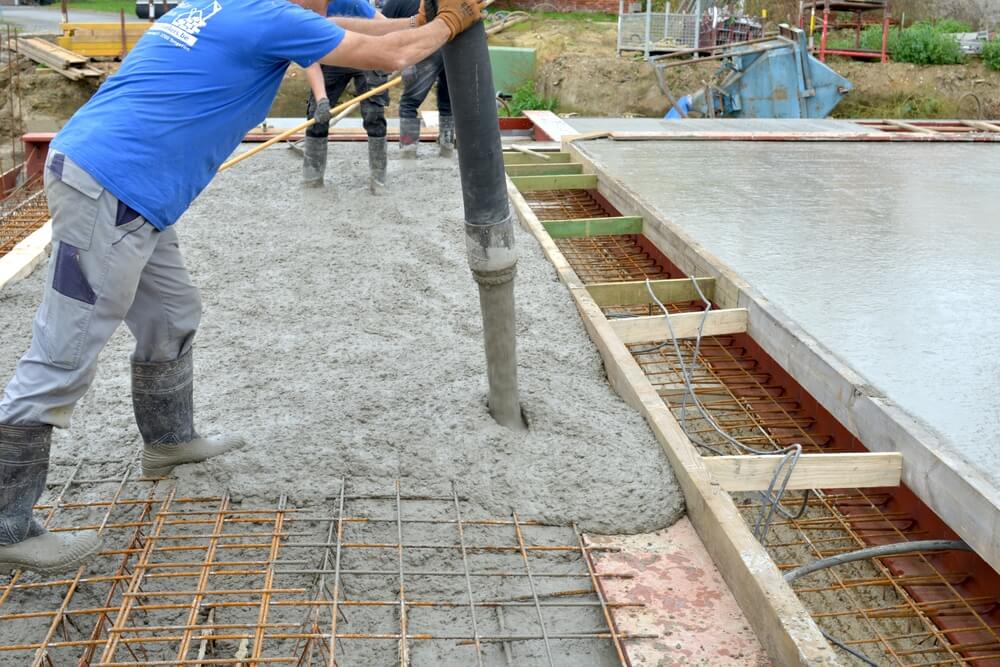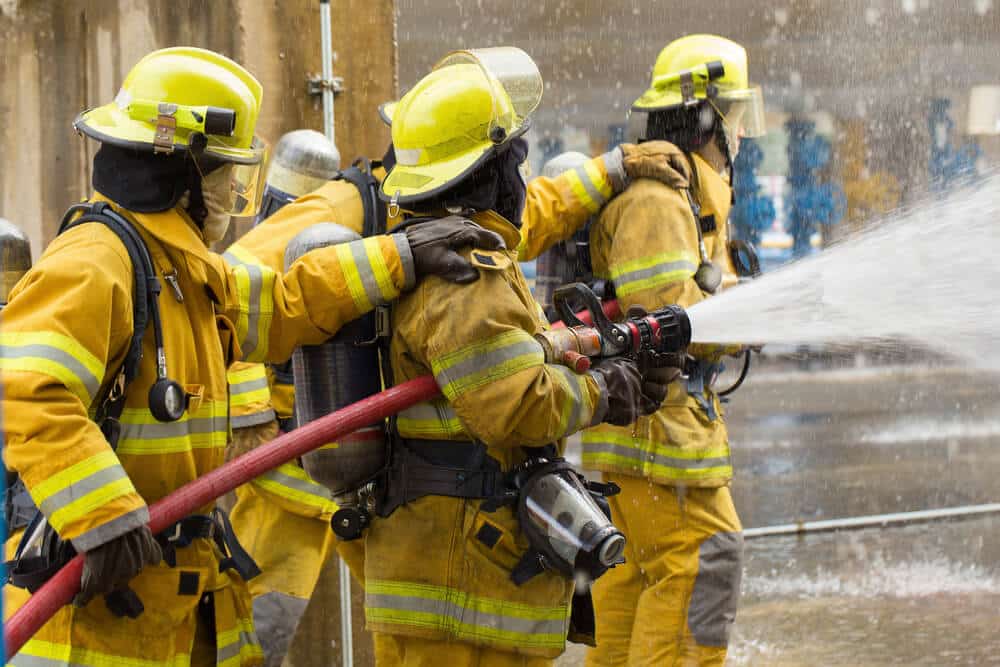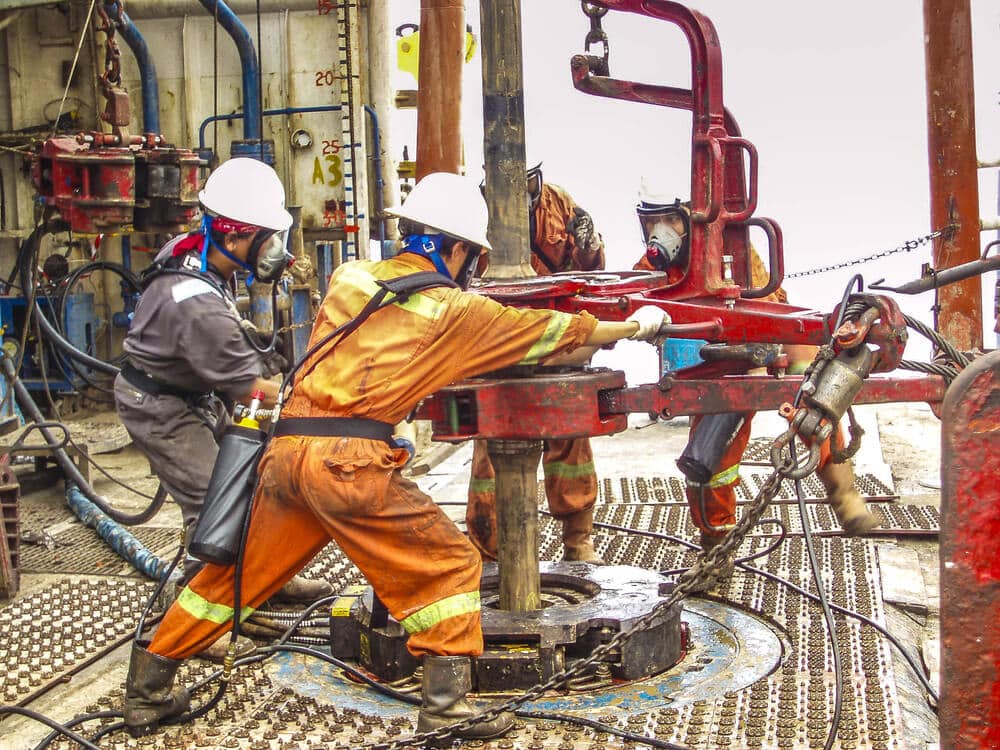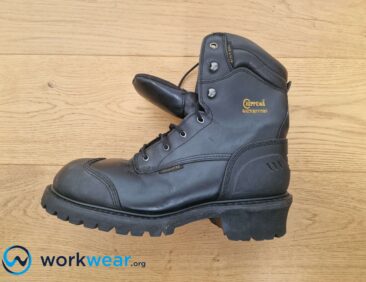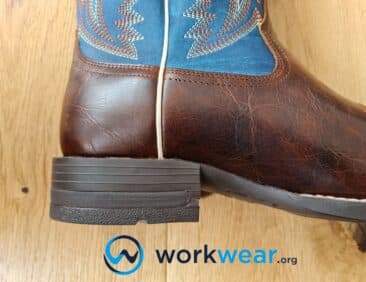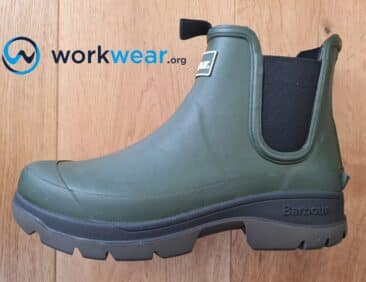Jobs that Require Rubber Boots
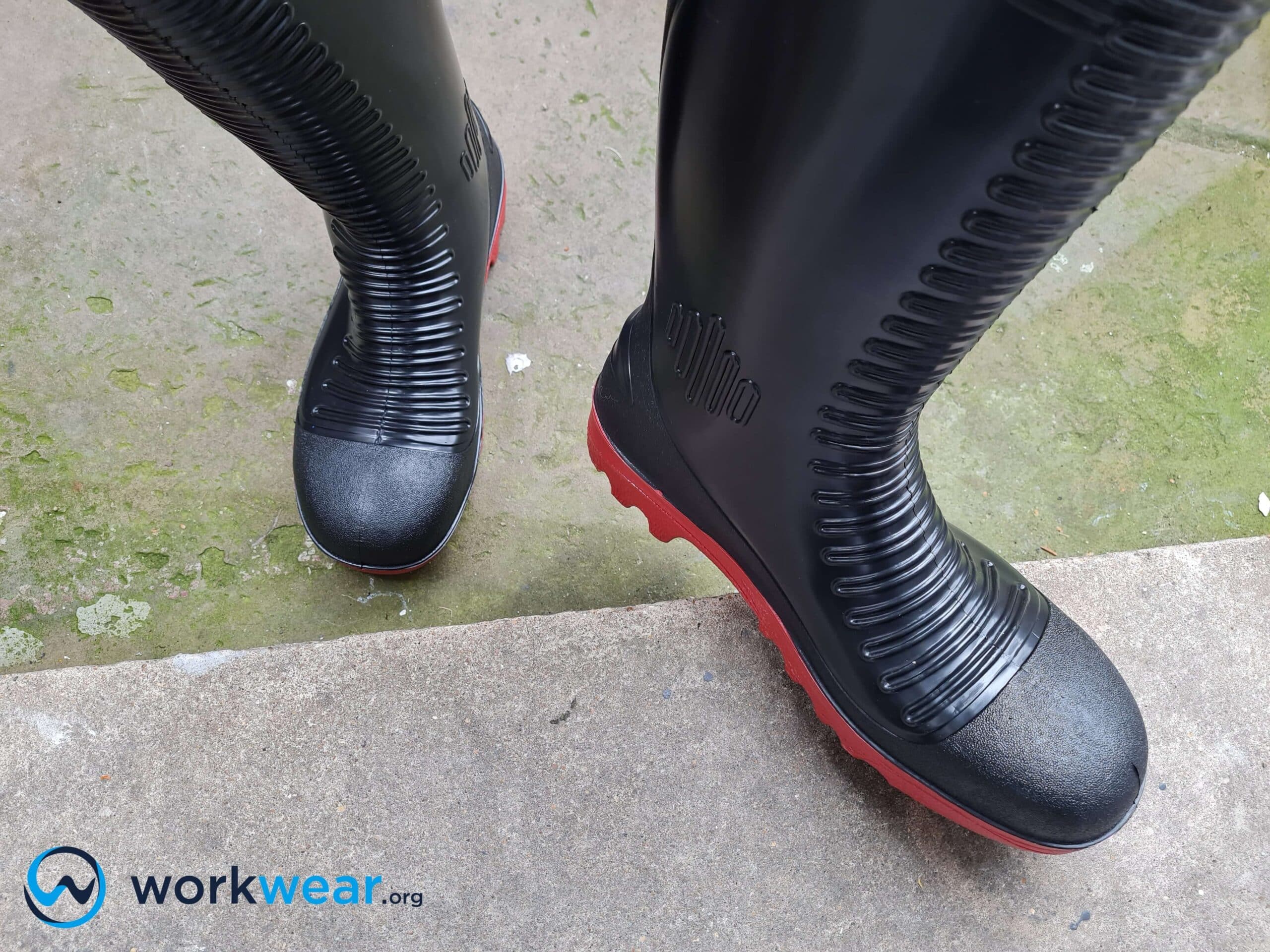
When you think of work boots, the first material that comes to mind is typically leather – but rubber works just as well for certain jobs.
The material’s natural liquid resistance makes rubber boots ideal for jobs exposed to wet or muddy conditions – which may be too slippery and challenging for some leather boot options.
Also, rubber boots are enhanced to offer chemical resistance, so exposure to harsh substances won’t easily penetrate or degrade the boots. In this article, we’ll discuss the different jobs that will benefit from using high-quality rubber work boots that deliver superior safety and comfort in harsh work surroundings.
Key Takeaways
Rubber boots are built with features that make them suitable for jobs in challenging settings. Their structures offer strong waterproofing or water resistance, increased coverage with more protection for the legs, reliable durability, flexibility for better mobility, robust traction, strong resistance to chemicals, and easy cleaning and maintenance.
Rubber boots are suitable for farmers who will benefit from the strong protection against chemicals, such as fertilizers and pesticides, needed for farmwork. They’re also ideal for gardeners who work in muddy conditions and need high-traction boots. Rubber boots’ strong liquid resistance is a huge benefit to landscapers who may need to build and maintain outdoor landscapes in variable weather.
Rubber work boots are ideal for construction workers focused on outdoor job sites, as these professionals need rubber’s strong waterproofing for protection against the elements. These boots are recommended for electricians, with the natural insulation of rubber working to minimize the risk of electrocution when working near electrically charged objects. Rubber boots are also great for sanitation workers who need grippy and protective footwear while cleaning and maintaining establishments.
Food processing personnel need rubber boots that help maintain stable footing while walking on often wet and slippery floors in food processing plants. Fishermen also need rubber boots to keep their feet dry while fishing, arranging the day’s catch, and preventing slipping on the wet ground.
Rubber boots are required by firefighters who need extra protection against wetness and slipping, which can be huge risks while fighting fires. They’re also needed by oil rig workers who will benefit from the rubber material’s strong resistance against oils and chemicals that may be present in the work environment.
Features of High-Quality Rubber Boots
Superior Liquid Resistance
Rubber boots have strong liquid resistance.
This quality makes rubber boots ideal for work conditions with mud, water, and other liquids.
Unlike the material in some leather boots, the rubber structure blocks liquids and stops them from getting in, so the feet will stay completely even while working in extremely wet surroundings.
Sturdy Structure
High-quality rubber boots have tough profiles that can withstand demanding settings.
Typically, rubber work boots are made with thick rubber that won’t easily be torn or scratched by sharp or abrasive objects on the job site.
These boots are made to last a long time, even when used in challenging environments while doing strenuous tasks.
Enhanced Coverage
Rubber boots often have much taller styles than the average leather work boots.
These tall profiles cover more calf and leg areas to keep them safe against hazards – such as sharp or abrasive items – that may be encountered in the workplace. The higher coverage also prevents water and other liquids from getting into the boots through the opening, which is a risk when wading in deep puddles.
Strong Resistance to Chemicals
Rubber work boots with enhanced features can offer strong resistance against chemicals and oils. As a result, they can maintain their function and appearance without being damaged by the harsh substances that can be present in certain work areas.
Unlike other materials that are used for work boots, rubber doesn’t deteriorate quickly with exposure to oil and chemicals.
This quality also helps protect the skin, with the rubber blocking potentially harmful liquids so they won’t cause skin irritation or chemical burns.
Flexible
High-quality rubber work boots are designed to be flexible and easy to move in, even if they have tall styles.
The material effortlessly adapts to feet and leg movements, enabling efficient movements without compromising comfortable motion. The rubber structure may be sturdy, but it typically doesn’t hamper movements like other stiff boot materials.
Solid Slip Resistance
Rubber work boots are built with rubber soles that offer strong traction.
The soles often come with deep lugs that firmly bite into different surfaces, helping maintain a stable footing for a safer walking experience while navigating slippery or uneven ground conditions.
Easy Cleaning and Maintenance
Rubber boots are easy to clean and maintain.
They just need to be washed with water or hosed down after work to get rid of the dirt and mud that build up throughout the day. Unlike leather, rubber doesn’t need to be polished to maintain its high-quality appearance and function. Rubber work boots can be rinsed with water and wiped afterward or allowed to try on their own, and they won’t look like they’ve been neglected.
Jobs that Require Rubber Boots
Farmers
Farmers work mostly in surroundings that can get dirty quickly, so they need footwear that can be cleaned just as easily.
Rubber boots that get caked with mud or covered with thick dust can be hosed down and will quickly look good as new.
They can protect farmers’ feet when working with water and liquids, including chemicals necessary for farm work.
Rubber work boots also enable farmers to navigate uneven ground without slipping or stumbling for continued safety while on the job.
Gardeners
Gardeners do their tasks in areas where the ground can be soft or extremely muddy, increasing the risk of accidental slipping.
Using rubber boots in these challenging conditions helps gardeners move more efficiently and safely. In addition, these boots stop water and mud in the surrounding area from seeping in, so the feet continue to feel comfortably dry throughout the day.
Tall rubber boots offer extended coverage to protect more legs so they won’t be scratched by branches or plant thorns around the garden.
Fishermen
Fishermen work in wet areas, but sometimes they need to do so directly in the water. Even after fishing, preparing and cleaning the catch will involve working while surrounded by wetness.
Rubber boots protect farmers’ feet from becoming soaked when they’re in boats with water splashing all around.
The boots also form a barrier against wetness when transferring the catch into other containers or while cleaning and preparing them for transport. Rubber boots also help fishermen maintain their balance while walking on the wet ground around the work area. A special type of rubber boot called hip wader reaches up to the hip area, enabling fishermen to wade in the river while keeping their entire legs dry.
Electricians
Electricians often work in conditions with a high danger risk. Rubber boots help minimize electricians’ danger when working around electrical hazards.
Rubber provides natural insulation and prevents an electrical charge from flowing through, significantly reducing the risk of electric shock for electricians.
Rubber work boots provide the strong grip electricians need to maintain their stable footing while walking on slippery or unfinished floors or going up and down ladders. In addition, tall rubber boots protect the feet and legs of electricians from getting scratched by construction materials when installing electrical wirings on new buildings.
Sanitation Workers
Sanitation workers work all day on their feet to keep the surroundings clean. Therefore, they need rubber boots that can protect their feet from wetness from water from busted pipes, cleaning agents, and other liquids that can spill and need to be cleaned up. In addition, rubber work boots have flexible designs that allow sanitation personnel to comfortably walk around areas that need to be cleaned without stiff footwear limiting their mobility.
These boots provide increased coverage to protect the legs against abrasion and chemical burns from the cleaning solutions and work environment.
Construction Workers
Construction workers usually wear leather work boots, but in certain cases, work boots may be better for overall protection.
Rubber work boots can offer superior protection against wetness when in outdoor construction sites while it’s raining.
They stop the rain and mud from entering, maintaining the feet’s comfortable dryness all day. Rubber boots help minimize the risk of electrocution for construction professionals who work in new buildings where the electrical wiring is still installed. Tall rubber boots protect the feet and legs from accidental exposure to construction materials around the workplace.
Firefighters
Firefighters work in extremely dangerous situations where they need all the protection they can get.
Rubber boots are ideal for firefighters who need to protect their feet and legs against extreme wetness, which is always a risk when using water to put out fires. Firefighters’ boots are made with rubber that’s enhanced to withstand intense heat and won’t easily be damaged when exposed to oils and chemicals.
The flexibility of rubber allows firefighters to move as quickly as possible, enabling them to respond to critical situations without stiff footwear getting in the way of their agility.
Rubber boots with high-traction soles also make it easier and safer for firefighters to walk on exceptionally wet and slippery ground conditions without losing their balance.
Oil Rig Workers
Working in oil rigs is often dangerous, but proper footwear can significantly reduce the risk of serious injuries.
The harsh conditions typically include working on indoor or outdoor surfaces wet with chemicals, oil, water, and other liquids.
These substances can cause slipping, which can be prevented by wearing high-traction rubber boots that can keep the feet planted more firmly on the ground.
Top-notch rubber work boots can be enhanced to resist damage and protect against chemicals and oils in the work environment.
They also allow workers to move agilely to respond to time-sensitive issues in the oil rig since no stiff materials can restrict the feet’s movements.
Food Processing Plant Personnel
People who work in food processing plants need rubber boots to keep up with the demanding environment.
It’s common for the work area to have wet and greasy floors due to spilled materials used for food production, so there’s always a high risk of slipping.
Rubber boots have grippy soles that help stabilize the footing while walking on slippery food processing floors.
Tall rubber work boots also offer protection against hot liquids, ingredients, or harsh substances that may accidentally spill and harm the skin.
These boots are flexible enough to allow unhampered movements, resulting in more efficient and comfortable walking around the workplace.
Landscapers
Landscapers build and maintain outdoor landscapes, doing their job even in variable weather conditions. Therefore, these professionals need rubber boots with strong traction to prevent slipping while navigating muddy or waterlogged ground conditions.
Tall rubber boots offer better coverage to shield the feet and legs against injuries that may come from potential hazards, such as sharp branches, overgrown hedges, and protruding rocks.
Rubber boots will also keep landscapers’ feet dry even while working with plenty of water to clean the surrounding area since the waterproof structure of the boots completely blocks liquids.
Personal Testing Experience
It’s time to share our experience using two top-notch rubber work boots – the Barbour Nimbus Chelsea Boot and Dunlop Purofort Thermo+ Full Safety Boot. The Barbour Nimbus Boot is on the short side at 5.5 inches, but the shorter shaft (and twin gussets) makes the boot very easy to pull on. This remarkably flexible boot easily adapts to the foot’s movements, resulting in exceptional comfort and unhampered mobility. It also has exceptional traction to prevent slipping on challenging surfaces, but the loose fit can sometimes make walking a bit unsteady. On the other hand, the Dunlop Purofort Thermo+ Boot is much taller, with a height of 14 inches, and has enhanced safety features. It has steel toe caps to protect against dangerous compression and impact and a steel shank for improved stability. This boot is insulated and can keep the foot warm in temperatures that can go down to -50°C, while the extra-thick outsole retains heat in extremely cold settings. With its tall height, this boot is considerably heavier than the average rubber boots, so we don’t recommend it if you’re looking for lightweight footwear.
Conclusion
Rubber boots are not just for working in the rain – they’re also suitable for jobs that need to be done in challenging conditions. These boots are designed to provide a host of benefits, including strong liquid resistance, durability, enhanced coverage (especially with the taller styles), flexibility, strong resistance to harsh substances, superior slip resistance, and convenient cleaning and maintenance. Rubber work boots are ideal for farmers, gardeners, fishermen, sanitation workers, construction workers, firefighters, oil rig workers, food processing personnel, and landscapers. These boots can keep the feet comfortable and protected in tough worksites to improve safety and mobility while on the job.
FAQs
- Can construction workers wear rubber boots in indoor job areas?
- There is no rule against using rubber boots indoors, but doing so is unnecessary. When working in indoor areas, construction workers will benefit more from using leather work boots that are lighter and may be easier to move in.
- Are socks still needed for rubber work boots?
- Yes, socks still need to be worn even when using rubber boots. Socks shield the feet so they won’t rub against the inner part of the boots. They also absorb sweat to protect the feet from feeling extremely sweaty.
- Is it better to choose rubber boots with safety toes?
- It depends on the conditions in which the rubber boots will be used. For example, rubber work boots with safety toe caps are ideal for jobs exposed to dangerous impact and compression from heavy falling objects in the workplace. However, rubber boots with soft toes are more suitable for non-hazardous work conditions and will be easier to move in without the additional weight coming from the safety toe caps.
- Are rubber work boots uncomfortable?
- The old rubber boots tended to become uncomfortable because they could easily overheat. Thankfully, newer models have enhancements that include cushioned, breathable, and moisture-wicking interiors to address the comfort issues that once plagued rubber boots.
